The Time Machine (1960 film)
8.8 /10 2 Votes
Duration Language English | 7.6/10 IMDb Genre Adventure, Fantasy, Romance Story by H. G. Wells Country United States | |||||||||||||||||||||||||||||||||
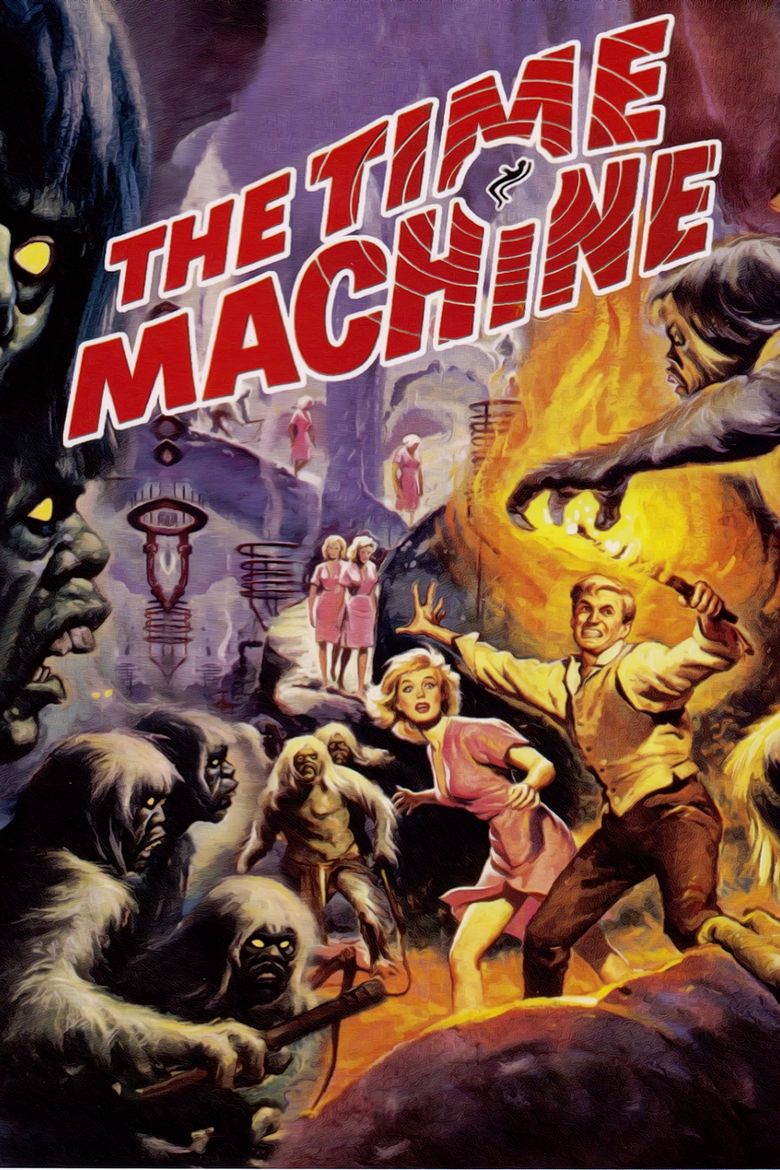 | ||||||||||||||||||||||||||||||||||
Release date August 17, 1960 (1960-08-17) Based on The Time Machine1895 novel by H. G. Wells Cast (George), (David Filby), (Weena), (Dr. Philip Hilyer), (Anthony Bridewell), (Walter Kemp) Similar movies Terminator Genisys , Mad Max: Fury Road , Tomorrowland , Dr. No , The Living Daylights , Tagline You Will Orbit into the Fantastic Future! | ||||||||||||||||||||||||||||||||||
The time machine 1960 trailer
The Time Machine (also known promotionally as H. G. Wells' The Time Machine) is a 1960 American time travel science fiction film in Metrocolor from Metro-Goldwyn-Mayer, produced and directed by George Pal, that stars Rod Taylor, Yvette Mimieux, and Alan Young. The film was based on the 1895 novella of the same name by H. G. Wells that was hugely influential on the development of science fiction.
Contents
- The time machine 1960 trailer
- The time machine 1960 2002 science fiction film trailer www goodnews ws
- Plot
- Production
- Home media releases
- Soundtrack
- Box office
- Awards and honors
- Comic book adaption
- 1993 sequeldocumentary
- References
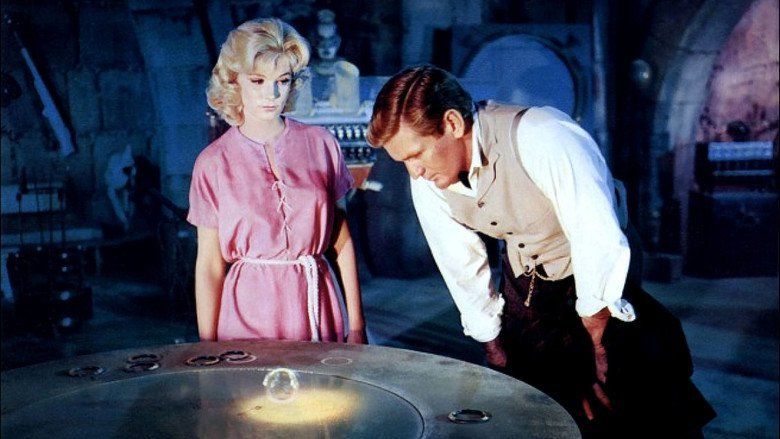
An inventor in Victorian England constructs a machine that enables him to travel into the distant future; once there, he discovers that mankind's descendants have divided into two species, the passive, childlike, and vegetarian Eloi and the underground-dwelling Morlocks, who feed on the Eloi.
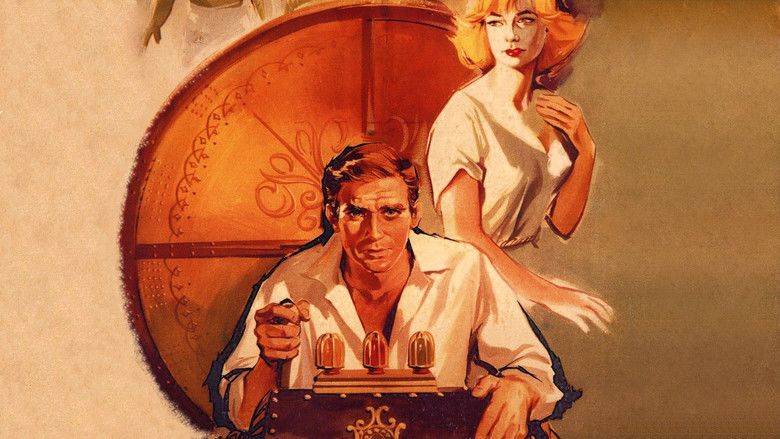
George Pal, who had earlier made a film version of Wells' The War of the Worlds (1953), always intended to make a sequel to The Time Machine, but he died before it could be produced; the end of Time Machine: The Journey Back functions as a sequel of sorts. In 1985 elements of this film were incorporated into the documentary The Fantasy Film Worlds of George Pal.
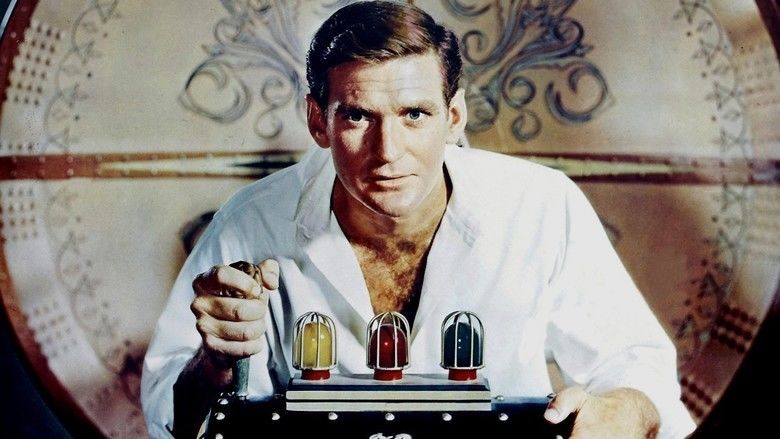
The Time Machine received an Oscar for its time-lapse photographic effects, which show the world changing rapidly as the time traveler journeys into the future.
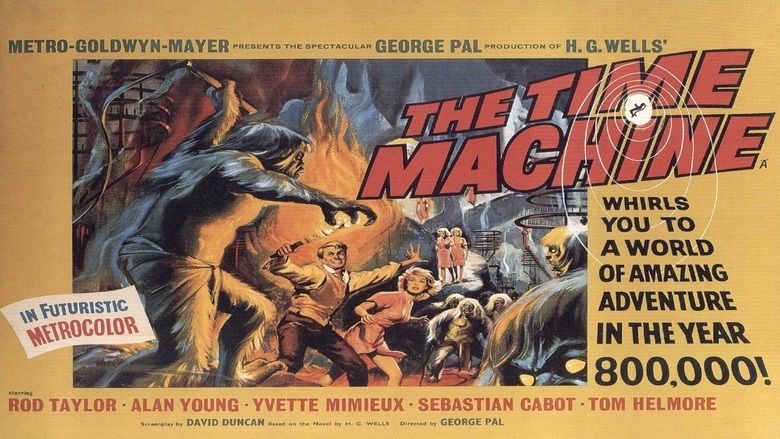
The time machine 1960 2002 science fiction film trailer www goodnews ws
Plot
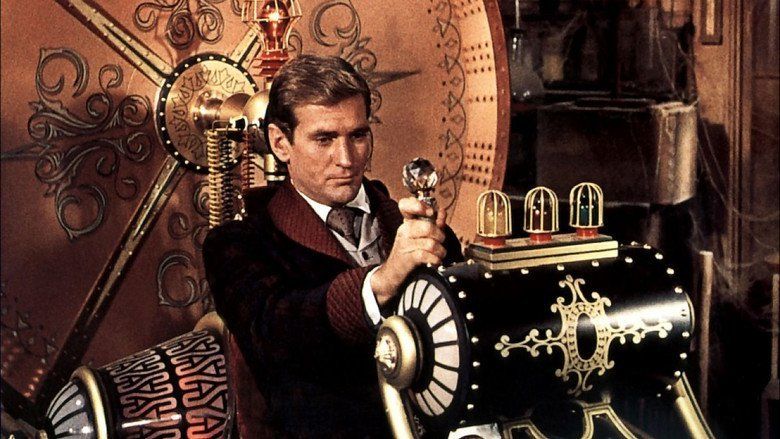
On January 5, 1900, four friends arrive for a dinner at the London home of their inventor friend, played by Rod Taylor, who is only referred to as "George" in the film...perhaps as credit to the author of the novel, H. George Wells. The Time Traveler is not initially present, but shortly shows up, bedraggled and exhausted, and begins to describe the strange experiences he has had since the group last met.
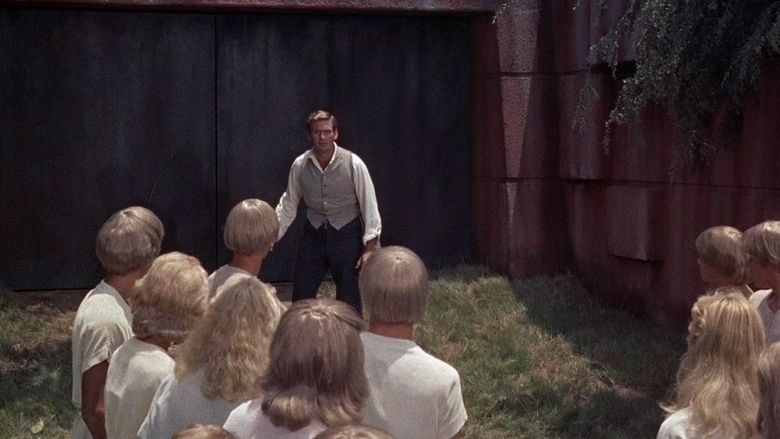
At their earlier dinner on New Year's Eve, George described time as "the fourth dimension" to David Filby (Alan Young), Dr. Philip Hillyer (Sebastian Cabot), Anthony Bridewell (Tom Helmore), and Walter Kemp (Whit Bissell). He shows them a small model time machine and asks a guest to press a tiny lever. The device disappears, validating his claim, but his friends remain unconvinced; their reactions vary from curiosity to frank dismissal.
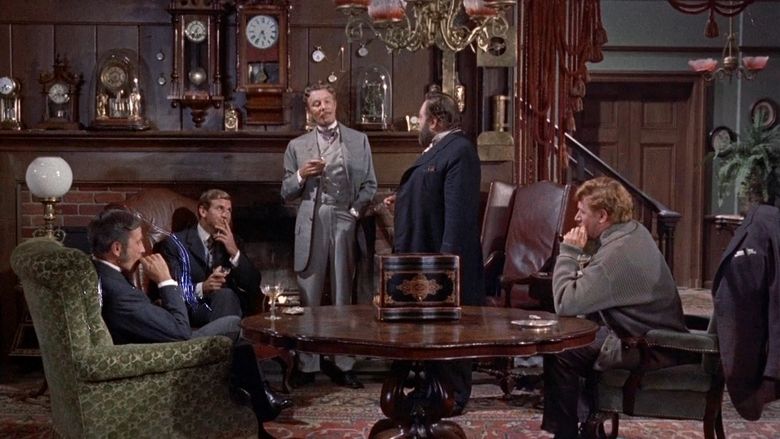
George bids his guests a good evening, then heads downstairs where his full-size time machine awaits. He presses a lever and moves forward through time 17 years into the future. He meets Filby's son, James, who tells him of Filby's death in the Great War. Saddened, he resumes his journey, stopping in 1940 during The Blitz, finding himself in the midst of "a new war"; George resumes his journey and stops in 1966, finding his neighbourhood now part of a futuristic metropolis. People are hurrying into a nearby fallout shelter amid the blare of air raid sirens. An elderly James Filby urges George to immediately take cover. A nuclear explosion causes a sudden volcanic eruption around him. George continues his journey forward as the lava rapidly cools and hardens, trapping him inside. He travels much farther into the future until the rock eventually erodes away, revealing a lush, green, unspoiled landscape.
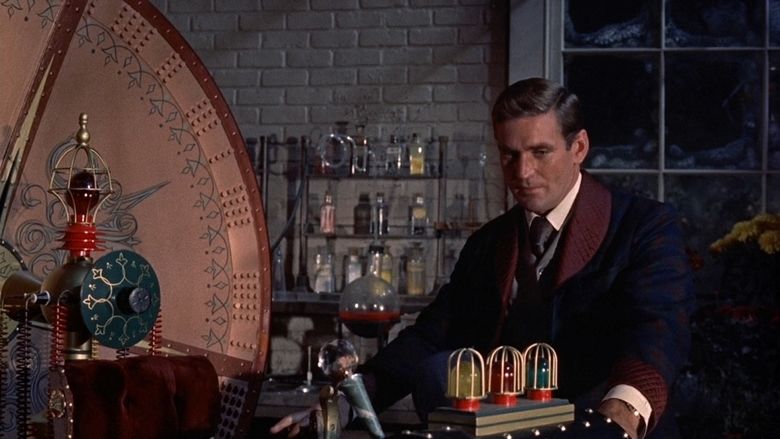
George stops in AD 802,701 near the base of a towering sphinx. He goes exploring and finds a group of delicate young men and women with simple clothing gathered at a stream. One woman, carried off by the current, screams for help but none of her companions show any concern. George rescues her and is surprised when, revived, she walks away without a word; later, she seeks him out and gives him a flower. She says her name is Weena (Yvette Mimieux) and tells George her people are called the Eloi. The Eloi do not operate machines, work, or read, and know little of mankind's history.
That night, George discovers his machine has been dragged into the sphinx. Weena follows, telling him "Morlocks", who only come out at night, have moved it. A Morlock jumps out from behind bushes and tries to drag her away, but the creature's light-sensitive eyes are blinded by George's fire torch. Weena has never seen fire before.
The next day, Weena shows George domed, well-like structures that dot the landscape: air shafts that double as access to the Morlock underworld. She takes him to an ancient museum where "talking rings" tell of a nuclear war in the distant past. A reduced population fought for survival in the poisoned landscape; many decided to live underground in permanent settlements, while some returned to the surface. George realises this was the beginning of speciation for the Morlocks and the Eloi. He starts to climb down a shaft, but stops when sirens blare from atop the sphinx. He finds Weena gone and crowds of Eloi in a trance-like state, entering open doors at its base. The sirens stop and the doors close.
George enters the Morlocks' subterranean caverns and is horrified to see that the Eloi are the free range livestock for the creatures. Finding Weena, he begins fighting the Morlocks. His efforts inspire others to defend themselves. George sets a fire and urges the Eloi to clamber to the surface, where he directs them to gather dry tree branches and drop them down the shafts. Smoke billows out of the shafts, and the subterranean cavern later collapses.
The next morning, George finds the sphinx in charred ruins and its doors open. His time machine sits just inside. He enters, and it turns out that the surviving Morlocks had set a trap for George. The doors close, and George is attacked in the dark by Morlocks. George sends his time machine into the past, back to 1900, coming to rest on the lawn outside his home, where the story had begun, and now ends.
As the bedraggled George recounts his story, his friends are again skeptical. He produces Weena's flower and Filby, an amateur botanist, says that he cannot match it with any species known in the 19th century. George bids his guests a good evening. Filby steps out but returns to find George and his time machine gone. There are drag marks which, Filby speculates, indicate that the George wanted the time machine to be positioned outside the sphinx when he reappeared in the future. The housekeeper notes that nothing was missing except three books that she could not identify. When George's housekeeper wonders if he will ever return, Filby observes that he could not say but that "He [(George)] has all the time in the world".
Production
George Pal was already known for his pioneering work with stop-motion animation, having been nominated almost yearly for an Oscar during the 1940s. Unable to sell Hollywood on the concept of the film, he found MGM's British studio (where he had filmed Tom Thumb) open to his proposal.
The name of the film's main character—alluded to in dialogue only as "George"—connects him both with George Pal and with the story's original science fiction writer H. G. (George) Wells. The name "H. George Wells" can be seen on a brass plaque on the time machine.
Pal originally considered casting a middle-aged British actor like David Niven or James Mason as George. He later changed his mind and selected the younger Australian actor Rod Taylor to give the character a more athletic, idealistic dimension. It was Taylor's first lead role in a feature film.
MGM art director Bill Ferrari designed the time machine. Recognized today as a classic film property, Ferrari's machine suggested a sled made up of a large clockwork rotating disk. The disk rotated at various speeds to indicate movement through time, evoking both a spinning clock and a solar disk. In a meta-concept touch, a brass plate on the time machine's instrument display panel identified its inventor as "H. George Wells", though the Time Traveler is only, otherwise, referred to as "George" in the film.
The charm of a fantastic technology (time travel), wrapped in the archaic guise of brass, rivets, Art nouveau arabesques, and crystal mechanisms, was one of influences on the later emergence of the steampunk genre. The depiction of Eloi in the film was one of the influences on the flower children later in the 1960s.
With a budget of under $1MM, the film could not be shot in London, where the plot sets the story. Thus, the live-action scenes were filmed from May 25 to June 30, 1959, in Culver City, California, with the backgrounds often filled in by virtue of mat paintings & models.
Home media releases
Released multiple times on Beta and VHS video cassette, Capacitance Electronic Disc (CED), and both letterboxed and open matte LaserDisc, the film was released on DVD in October 2000 and on Blu-ray Disc in July 2014 from Warner Home Video.
Soundtrack
An original score CD was released in 1987. The track listing is as follows:
- Main Title / Credits
- London 1900 (Filby's Theme)
- Time Machine Model
- The Time Machine
- Quick Trip Into The Future
- All The Time In The World
- Beautiful Forest / The Great Hall
- Fear
- Weena (Love Theme)
- Rescue
- Reminiscing
- Morlocks
- End Title (Reprise)
- Fight With The Morlocks
- Time Traveler
- Escape
- Prayer / Off Again
- Trapped In The Future
- Love And Time Return
- End Title
- Atlantis, The Lost Continent (Overture): Main Title/Credits/Love Theme/Night Scene/Submarine/End Title
Box office
According to MGM records, the film earned $1,610,000 in the United States and Canada and $1 million elsewhere, turning a profit of $245,000.
The film had admissions of 363,915 in France.
Awards and honors
Comic book adaption
1993 sequel/documentary
In 1993 a combination sequel-documentary short, Time Machine: The Journey Back, directed by Clyde Lucas, was produced. In its third section, Michael J. Fox talks about his experience with the DeLorean sports car time machine from Back to the Future. In the short's final section, written by screenwriter David Duncan, Rod Taylor, Alan Young, and Whit Bissell reprise their roles from the original 1960 film.
References
The Time Machine (1960 film) WikipediaThe Time Machine (1960 film) IMDb The Time Machine (1960 film) themoviedb.org
